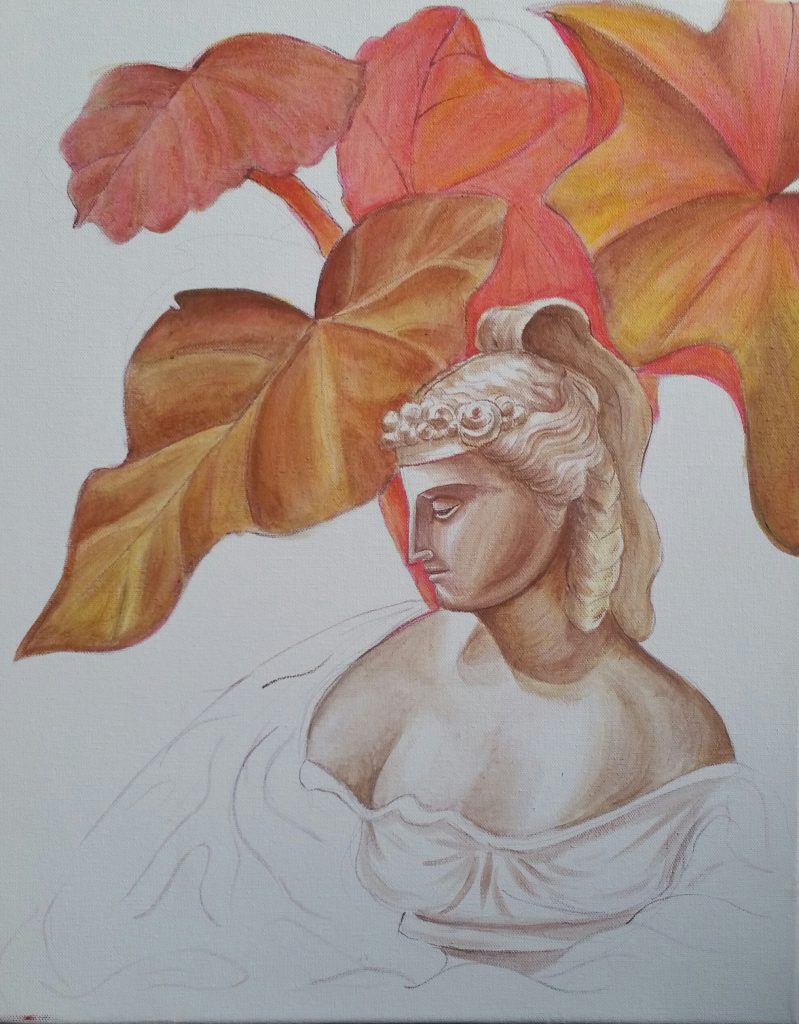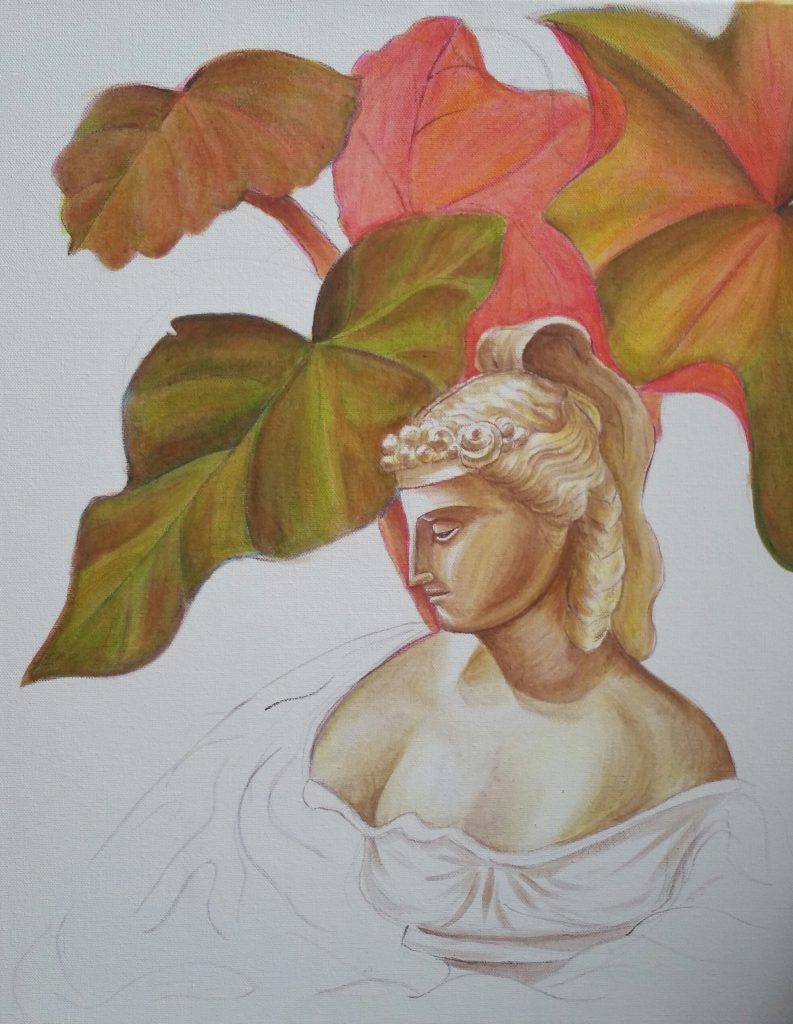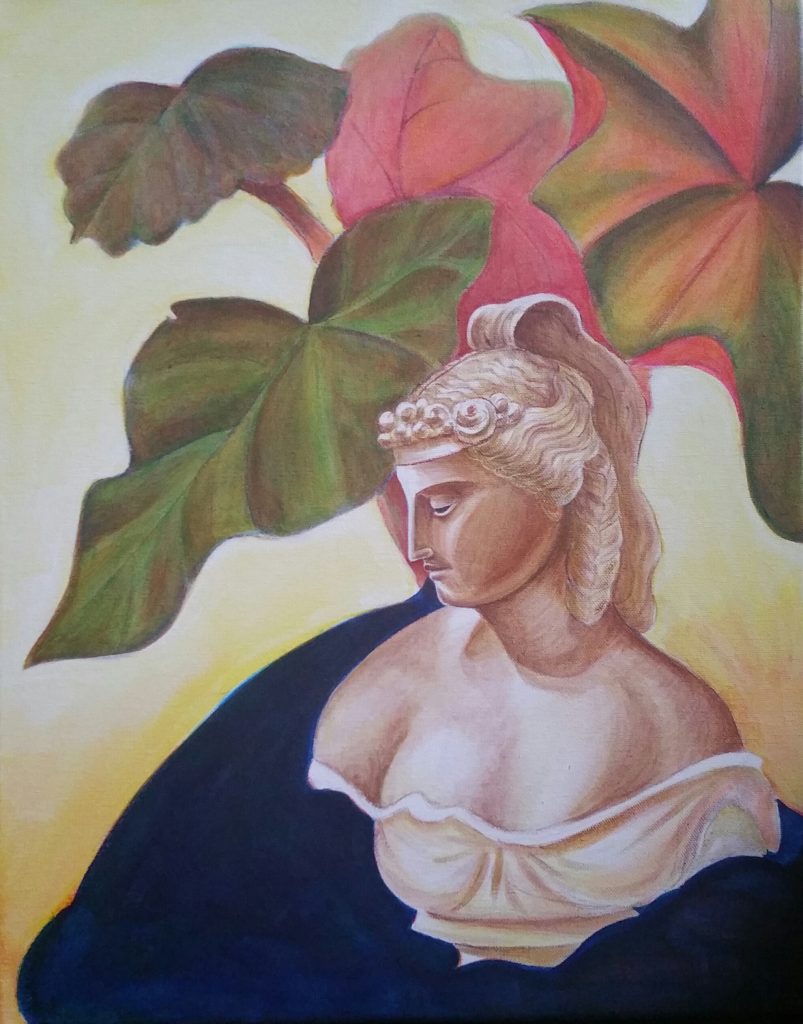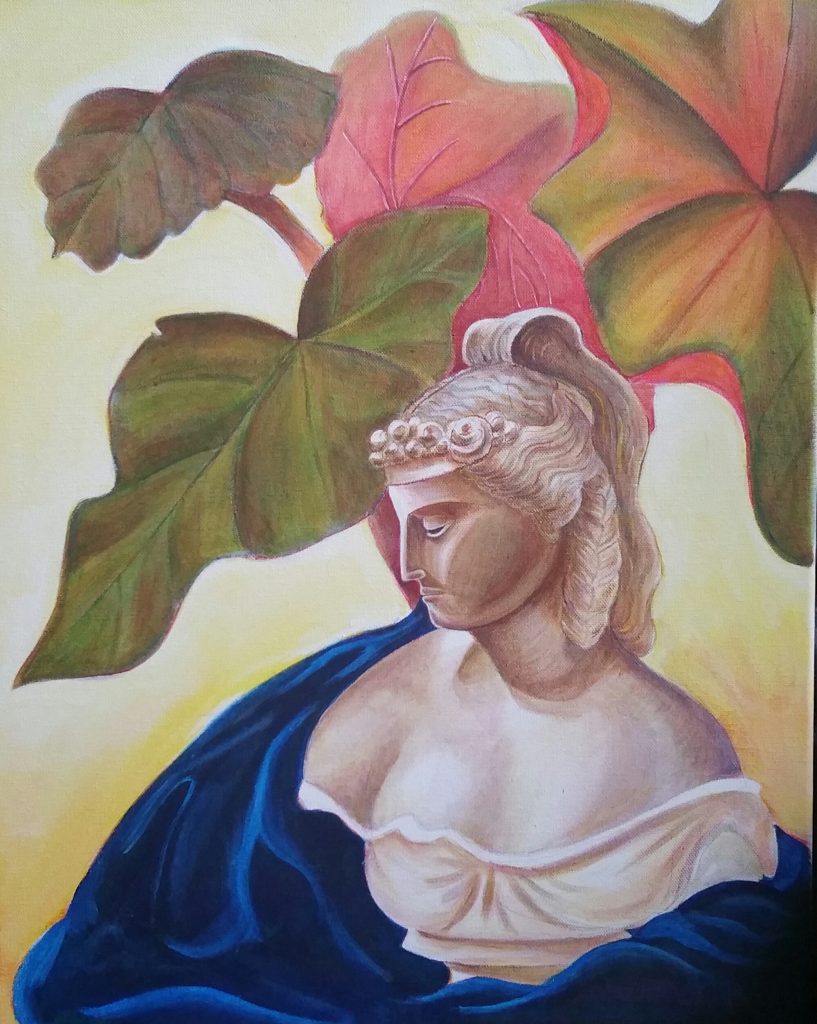Last week I started talking about a recent still life I wanted to paint in memory of my grandmother. Today, I’ll show you how I went about completing that work.
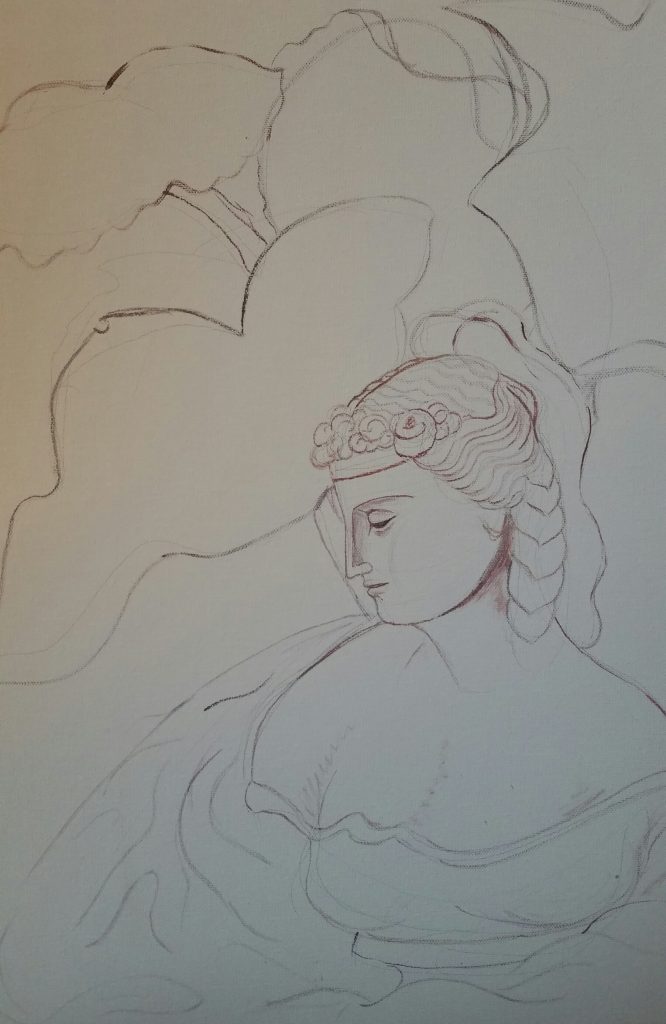
I started by lightly sketching the still life onto the canvas with pencil. Some artists have the confidence the go right at the canvas with no underdrawing, but I prefer having guiding lines. Drawing is the medium I work in most frequently, anyway, so whenever I paint drawing informs it on some level. Once I had the basic drawing in place, I went over the initial outlines with dark brown paint so that I could see the composition. From there, it was time to start painting in earnest.

When painting, I prefer working with thin, light layers rather than thick impastos, gradually building up the surface. I love glazing in particular, a technique where you paint translucent layers of pigment on top of one another.
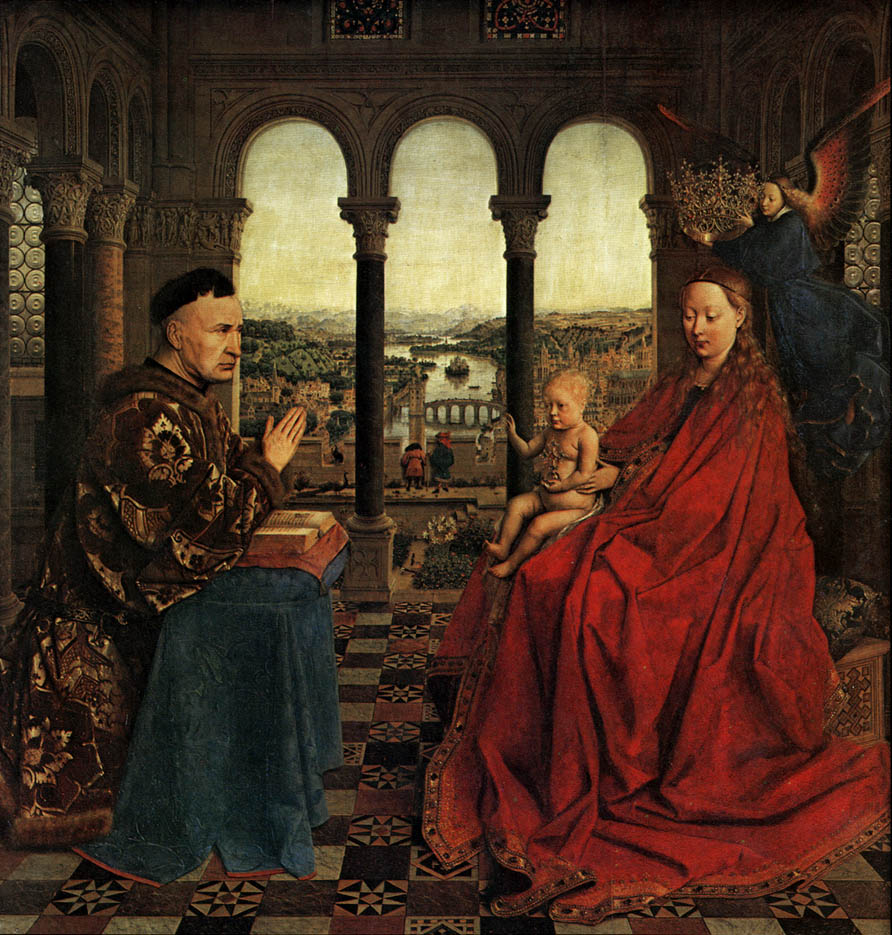
Northern Renaissance artists such as Jan Van Eyck and Rogier Van der Weyden used this technique to create their richly-detailed paintings, works that almost glow with all the layers of paint shining through. I’m not Van Eyck by any stretch of the imagination (I also primarily paint in quick-drying acrylic rather than slow-drying oil paints), but I’ve loved these works ever since I first studied them in college, and they continue to inform my work.
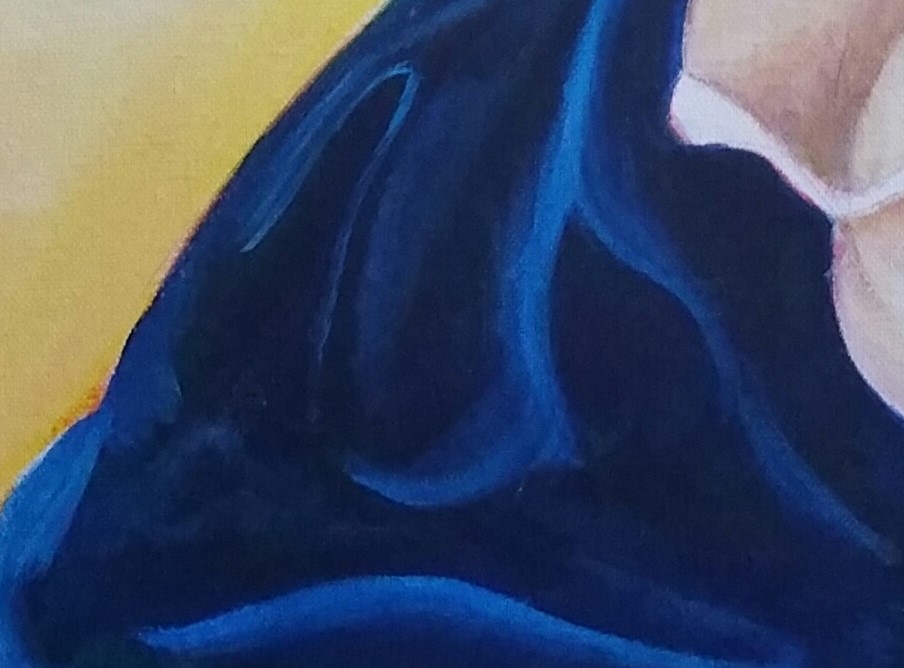
Using these techniques, I fleshed out the painting over a few days. As I worked, I contemplated the fickle nature of memory itself. Memories comprise a vital component of our personalities, yet as Alzheimer’s and other forms of dementia painfully demonstrate, they can be destroyed just like anything else. Less dramatically, memories change and evolve over time as our own developing wisdom and experiences reshape our perceptions of the past. Nostalgia, that seemingly benign but in my opinion potentially dangerous emotion, idealizes our perception of the past, making us yearn for a romanticized interpretation of yesterday that never existed. Practically every social interaction relies on the use of memory in one form or another, whether from simply recollecting someone’s name to recalling years’ of previous interactions, yet it’s a highly malleable essence.
Memory was a particularly important aspect of creating this painting, given that Grammie had slowly lost hers. As I layered glazes over one another, I imagined what it would be like to remake or recreate memories. I couldn’t recreate Grammie’s memories, of course, but making a painting that featured one of her treasured objects was a comfort to me, allowing me to recreate something for her.
I also thought about Grammie’s creativity as I worked. In addition to gardening, she was a textile artist. She made prize-winning hooked rugs and practiced embroidery. Through her church, she sewed book-bags for low-income children in her community, and always made a point in picking out colorful fabrics with vibrant patterns. She was also a skilled baker and
Finally, I had this piece:
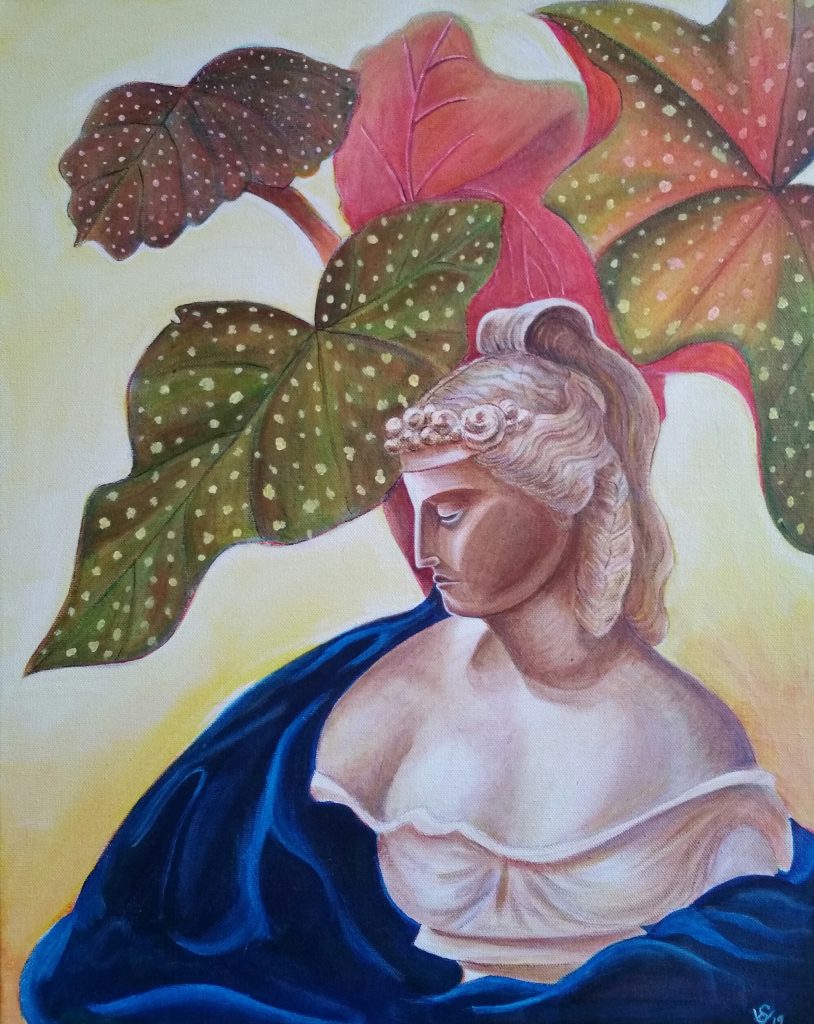
This was definitely a personal project, and a very therapeutic one to complete. Painting this allowed me to think about Grammie in postive ways, and to remember all the wonderful things she had done over her life. I’ll probably end up giving this to my parents, as the process is more important to me than the finished product, but I’m glad I completed this.
